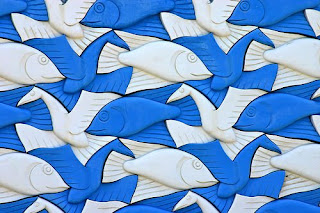So...
The "double shoken" came from China to Okinawa via Kanbun Uechi. It appears twice in Sanseiryu kata.
- In the first rendition, there is the following:
- From left sanchin stance, sliding step with left circle and right shoken thrust. *
- Sliding step back while putting back of right shoken on to the top of the back of the left shoken. The template for the position is Sanchin closed-gate position.
- While holding the double shoken position, do a 180-degree clockwise pivot turn.
- In the second rendition, there is the following:
- From left sanchin stance, sliding step with left circle and right shoken thrust. *
- Sliding step back while putting back of right shoken on to the top of the back of the left shoken. The template for the position is Sanchin closed-gate position.
- While holding the double shoken position, do a 45-degree clockwise pivot turn to a right Sanchin stance.
- Follow with a double hiraiken scoop and double hiraken thrust to eye level.
OK you bunkai junkies, what do you think?
Oh, and please don't bore me with the Kanshiwa bunkai interpretation. IMO this is just another example of hiding the good stuff.
- Bill
* Folks from the "inner circle" of practitioners in Kanei Uechi's dojo actually don't do a wauke there. Instead they do an osae uke. Osae translates as press down as in what a paper weight might do.



